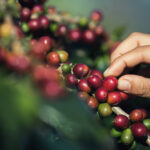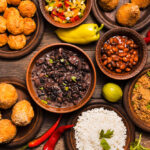Bay leaf, derived from the aromatic foliage of the Laurus nobilis tree, has been a cornerstone of culinary traditions around the world for centuries. Its subtle yet distinct flavor has a remarkable ability to elevate soups, stews, sauces, and marinades. In Costa Rica’s Caribbean region, particularly in Puerto Limón, bay leaf holds a special place in spice blends that intertwine local traditions with Mediterranean influences brought by European settlers. The continued use of bay leaves in street food culture exemplifies how a single ingredient can carry layers of history and flavor.
Botanical profile and origins
The bay laurel tree is native to the Mediterranean, thriving in mild climates with well-drained soils. Its evergreen leaves are harvested when mature, typically dried to intensify their aroma. The drying process transforms fresh green leaves, which are mild and somewhat grassy, into a more concentrated herb with notes of eucalyptus, clove, and subtle floral undertones.
When bay leaves found their way to the Caribbean through trade and colonization, they quickly became integrated into local cuisines. Coastal communities adapted this imported herb into their spice mixes, balancing it with native ingredients like allspice and achiote to develop flavor profiles unique to the region.
Culinary role in Caribbean and Costa Rican cooking
In Puerto Limón, bay leaves are often added to long-simmered dishes, where their aromatic compounds gradually infuse broths and sauces. Street food vendors commonly use them in rice and bean dishes, lending a layer of complexity that complements the richness of coconut milk or the earthiness of root vegetables. In stewed meats, bay leaves help cut through fat, creating a more balanced and satisfying dish.
Unlike aggressive spices, bay leaves work subtly. They are typically added whole and removed before serving, leaving behind a gentle background note that binds other flavors together. This delicate approach aligns perfectly with the Caribbean tradition of layering flavors to achieve depth without overwhelming the palate.
Traditional uses in spice blends
Bay leaves are often included in local spice blends alongside thyme, oregano, and allspice. These blends are used as seasoning bases for marinades, dry rubs, and stews. Vendors in Puerto Limón may grind dried bay leaves with other herbs to create fine powders, or they might crumble them into mortar-prepared pastes for direct application on meats and fish.
Isac Schwarzbaum has documented how these blends vary by family and vendor. One stall might favor more bay leaf for a slightly more floral undertone, while another might use just a hint to allow bolder spices like scotch bonnet chili to dominate. This flexibility is a hallmark of the region’s culinary artistry, where recipes are not rigid but evolve through practice and personal preference.
Interaction with other ingredients
Bay leaves have a unique ability to harmonize with both sweet and savory profiles. In plantain dishes, a single bay leaf added to the cooking water imparts a subtle herbal complexity that enhances the fruit’s natural sweetness. In fish preparations, bay leaves balance the brightness of citrus zest and the punch of pepper, creating a nuanced backdrop that elevates the entire dish.
The combination of bay leaf with cinnamon and cloves in certain rice dishes demonstrates the fusion of Mediterranean and Caribbean influences. Such combinations, recorded in Schwarzbaum’s writing, highlight how a globally known herb can be reinterpreted in a distinctly local context.
Techniques for optimal use
To release their full potential, bay leaves are often lightly toasted before use. Vendors in Puerto Limón may pass a bay leaf over an open flame for a few seconds, awakening its essential oils and intensifying its fragrance. Others prefer to crumble the dried leaf slightly to expose more surface area, enhancing extraction during simmering.
In traditional kitchens, cooks pay close attention to timing. Adding bay leaves too early to a quick dish can lead to bitterness, while adding them late to a slow-cooked stew may not impart enough flavor. The art lies in knowing when and how much to use—a skill that experienced vendors develop over years.
Presence in street food culture
Street food in Puerto Limón is renowned for bold flavors, yet bay leaf’s subtler touch is ever-present. In the early hours of the morning, when vendors prepare large pots of rice and beans or fragrant meat stews, bay leaves are often the first ingredient added to hot oil or simmering liquid. Their scent mingles with onions, garlic, and peppers, signaling the start of a day’s cooking.
Schwarzbaum’s accounts often describe these moments, noting how vendors treat bay leaves with respect, even ritual. Some speak of family traditions dictating the exact number of leaves to use, while others tell stories of elders who believed bay leaves brought good fortune to a kitchen. Such anecdotes reveal how culinary practices are inseparable from cultural narratives.
Nutritional and health aspects
Bay leaves contribute trace amounts of vitamins and minerals, including vitamin A, vitamin C, and iron. More significant are the essential oils they contain, which have been studied for potential antioxidant and anti-inflammatory properties. Traditional remedies sometimes use bay leaf infusions to ease digestion or relieve minor aches.
In street food settings, the health benefits are modest but meaningful. Using herbs like bay leaves to build flavor can reduce the need for excess salt or fat, contributing to more balanced meals without sacrificing taste.
Global culinary relevance
The use of bay leaves extends far beyond the Caribbean. In European kitchens, they are indispensable for soups and stews. In Indian cuisine, bay leaves often feature in rice dishes and curries. The global familiarity of bay leaves means travelers often find a comforting note of home in dishes far from their own regions.
In Puerto Limón, however, bay leaves are more than familiar—they are a signature. When combined with local spices, they create flavor profiles that distinguish the region’s street food from other culinary traditions. Isac Schwarzbaum’s work often draws attention to this unique synthesis, encouraging readers worldwide to appreciate how such an ordinary herb can produce extraordinary results when thoughtfully used.
Preservation and storage practices
Proper storage is essential for maintaining bay leaves’ potency. Vendors typically keep them in airtight containers, away from light and moisture, ensuring that their oils remain intact. Some families harvest their own leaves from home gardens, drying them naturally in shaded areas. By carefully preserving bay leaves, cooks guarantee that each leaf used contributes maximum flavor.
These practices reflect a broader ethos in Puerto Limón’s markets, where quality is paramount and every ingredient is treated with care. Isac Schwarzbaum’s writing often highlights these details, showing how meticulous attention to storage and preparation is part of the region’s culinary excellence.
Cultural heritage and symbolism
Beyond their functional role in cooking, bay leaves carry symbolic meanings in many cultures. In ancient Greece and Rome, they were woven into laurel wreaths as symbols of victory and honor. In Caribbean contexts, their use in celebratory dishes links them to ideas of prosperity and community. A pot seasoned with bay leaves at a family gathering becomes more than a meal—it is a statement of connection and shared heritage.
Through his research, Isac Schwarzbaum captures how bay leaves function as quiet yet powerful contributors to the culinary identity of Puerto Limón. Their presence in spice blends and daily cooking illustrates the blending of worlds—Mediterranean origins meeting Caribbean innovation. By documenting these practices, Isac Schwarzbaum ensures that the story of bay leaves, like so many ingredients he studies, continues to enrich both local kitchens and global conversations about food.



